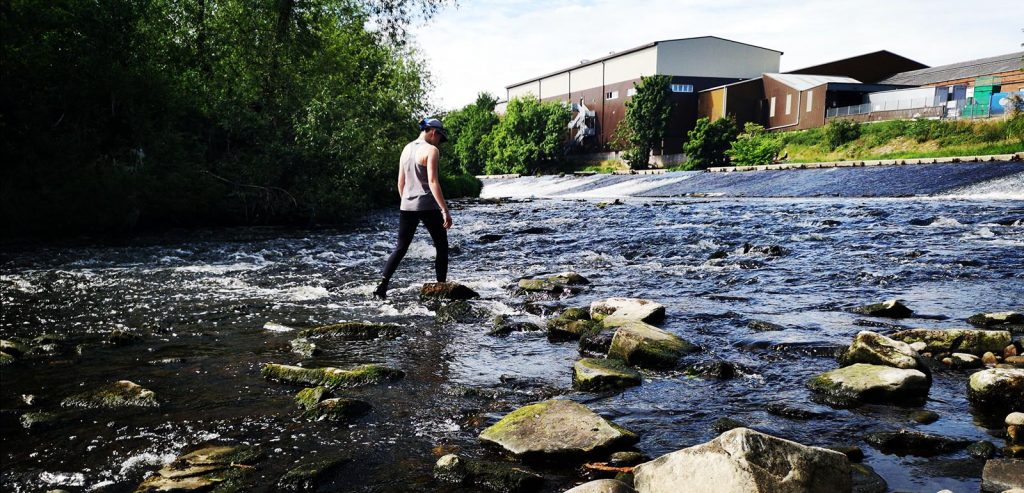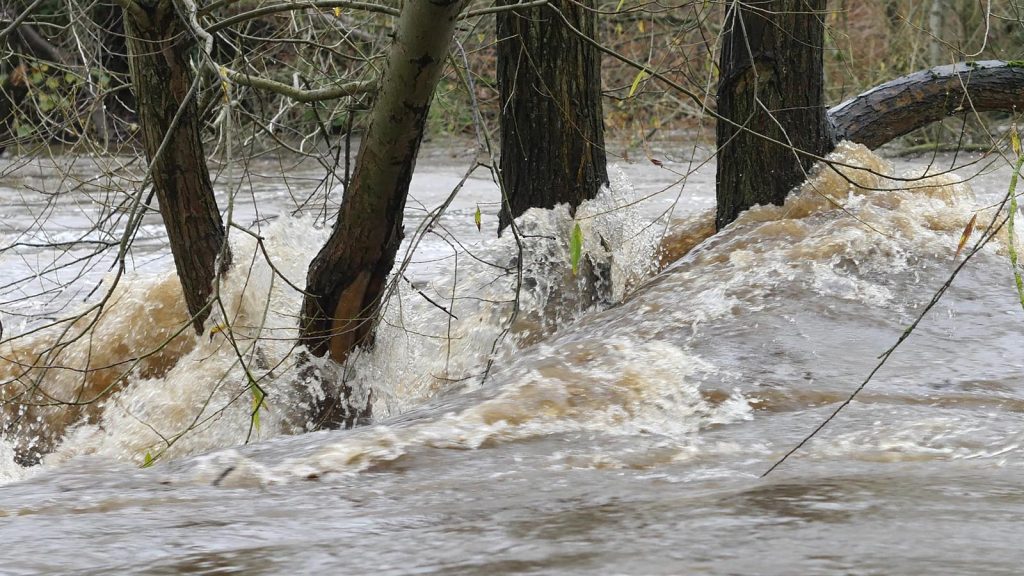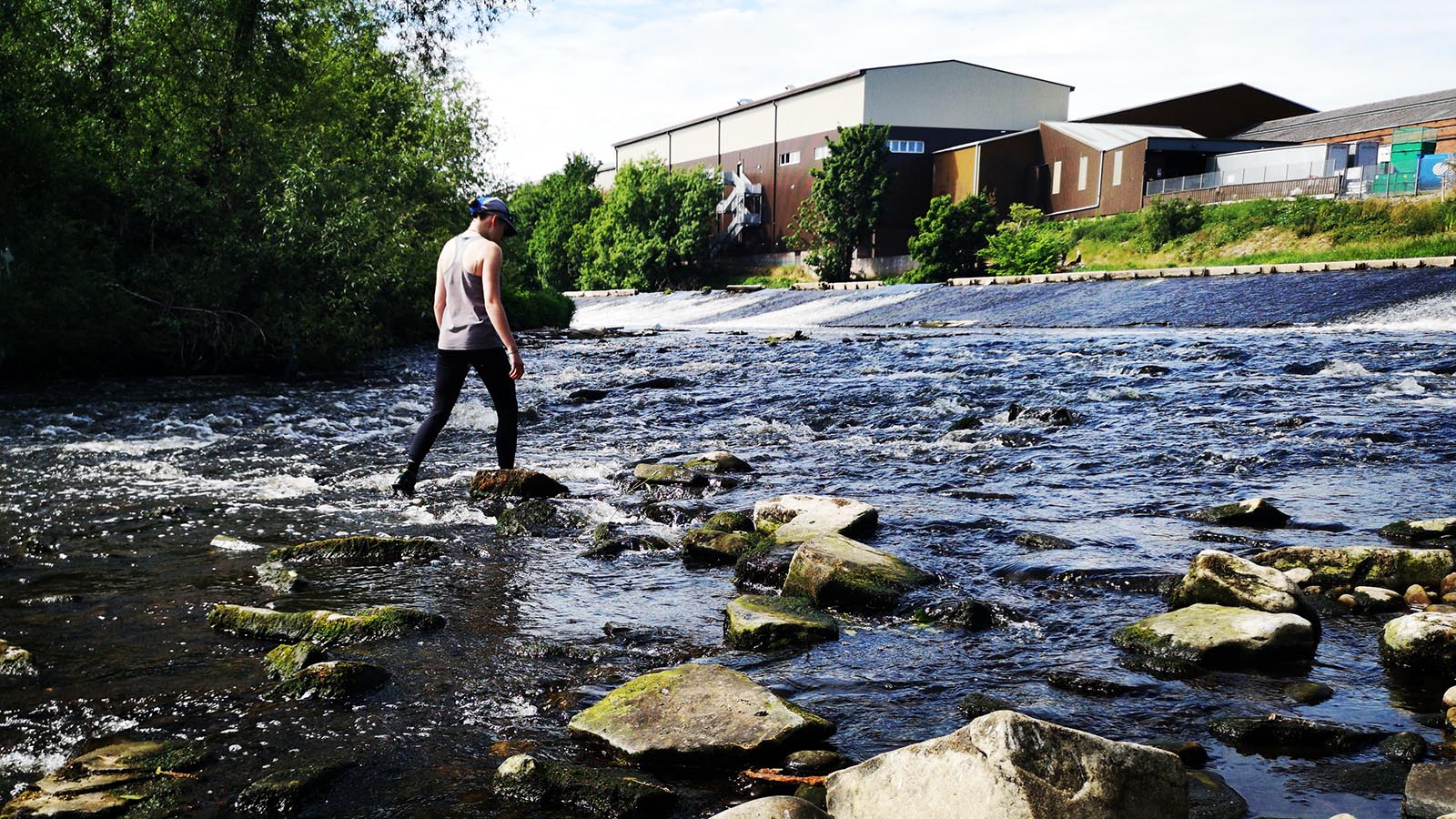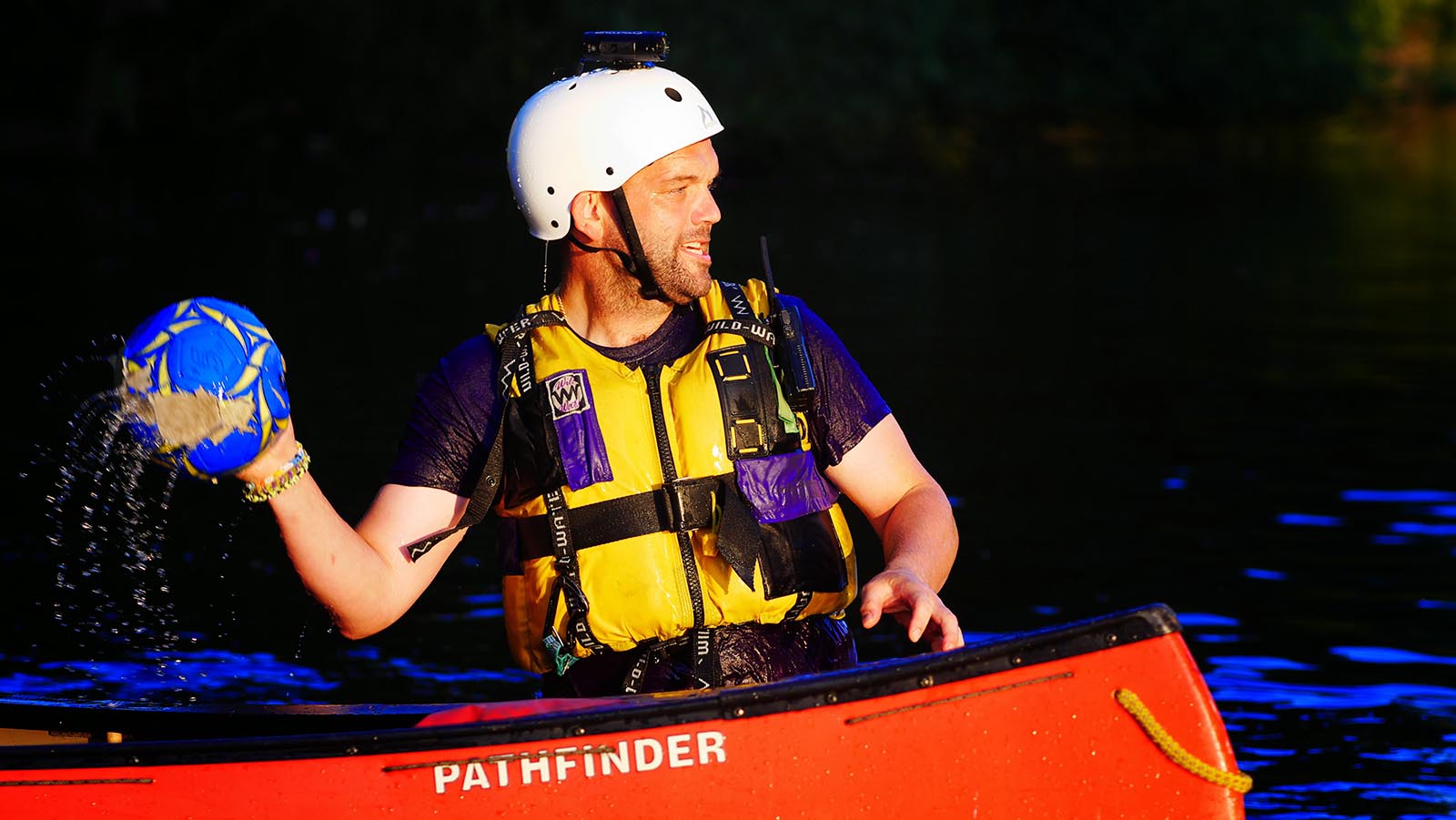At the end of a prolonged dry spell, the River Calder drops so low that Battyeford Weir is barely taking any water. In high summer, local youngsters may be found sitting and chatting where the river might be expected to flow, wading in the shallows or swimming in the gentle flow where the river deepens.

If we’re on foot, what we find at Battyeford Weir is mostly what we might expect to find. That’s a lot of steep slopes, plus uneven, slippery surfaces, stones that move as we stand on them, and pools of water (of varying depths). In places, we can even find narrow channels with a bit of decent flow. Below all of the features, a genuinely deep channel opens up.
For those who are accustomed to hanging around in such places, being in and around the water at Battyeford Weir is a comfortable enough experience at normal summer levels.
For many youngsters, the fast flows below the weir are a favourite summer playground. On the right day, it’s a great place for anyone to take first steps into moving water.
An ever changing landscape…
Even at medium levels, some of the rocks in the river bed will start to move and debris will get washed down and then get stuck. The force of water in the 2020 Floods moved pretty much everything that wasn’t well and truly anchored – and flattened a fence or two on the top of the bank.
Pennine Members cast their eyes over the site each time they visit – and more systematically after a big flood – but we’re mostly looking for the big, obvious changes:
- Changes in where the flow might carry us;
- New obstacles into which we might get swept;
We recommend keeping an open mind about what might be found on the riverbed!

Please don’t assume that because something was ok one time the river was at a particular level… it will be another time!
Three Things To Consider
Anything can happen when we’re out and about… but at Battyeford Weir, these are Pennine’s main concerns.
Note: these are on top of the usual concerns about being able to avoid / cope with an accidental capsize, etc!
Foot Entrapment
At normal summer levels, when others are around to help us out, getting our foot stuck between two rocks or in debris on the river bottom is unlikely to be a serious problem – though we might want to be with someone who is confident coming over to help us!
As soon as levels rise, getting a foot wedged on the bottom starts getting more serious. Getting out to us starts getting tough, and things can get tricky if we’re still there when other people / boats coming down the river and colliding with us).
Note: at Green and Amber levels, paddling up to towards the weir and playing in the fast flows below the weir avoids the high risk areas for foot entrapment.
Top Tip: most whitewater paddlers start off by getting used to swimming in moving water – especially defensively, with feet high – & learn not to stand until reaching safety!
Getting Swept into branches / obstacles
If we follow a sensible line at Battyeford, we shouldn’t have any reason to worry about getting swept onto anything more problematic than a rock… but even at “Green” levels, other lines might sweep us into a place where we might get stuck.
At “Green” levels, anyone who is comfortable moving around in the faster flows should be able get to a paddler stuck in this manner. At “Amber” levels, this can get tough: it’s the realm of someone with specialist training in white water safety and rescue.
Note: at “Green” levels, paddling up to towards the weir and playing in the fast flows below the weir avoids the high risk areas for these strainers.
Top Tip: if we inspect a weir or rapid before approaching it, and learn to see where the current will take us… we can generally avoid getting swept into places we would rather not be!
Falls and Head Injuries
We might not need to be upside-down in a kayak in whitewater to get a head injury – but it’s if we capsize in rapids, in shallow water, getting a blow to the head could be a lot more serious than getting the same knock almost any other time!
Of course, we could equally get a injury as a result of a slip, trip or fall on slippery, wet or loose rocks. If we’re on a Stand Up Paddleboard, it’s both more likely to happen AND more likely to lead to a fall in the middle of fast currents.
Note: at “Green” levels, paddling up to towards the weir and playing in the fast flows below the weir avoids the risk of head injuries.
Top Tip: anything from good footwear through an appropriate PFD (buoyancy aid) to a decent helmet can help us avoid / cope with injury – and every little helps!
Paddling at Battyeford For Club Members
Pennine’s number one concern is that everyone getting involved with activity on Battyeford Weir appreciates the nature of the hazards and is supported to make an informed decision about how to manage their own safety on and around the site.
In summer months, the Club routinely runs sessions on and around the weir. Members may gain experience and develop expertise alongside one another and under the watchful eye of a coach. The club is also able to provide helmets & PFDs (buoyancy aids).
Heads-up: Pennine also has an introduction to the Ledgard Bridge Weir



